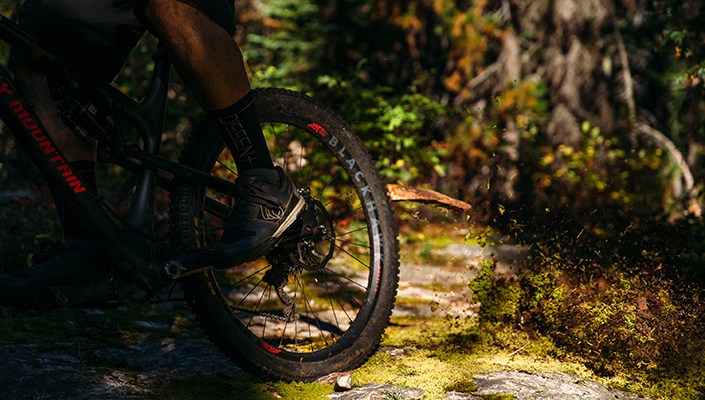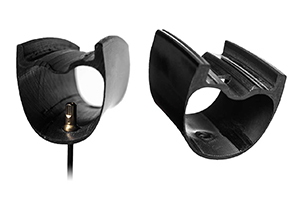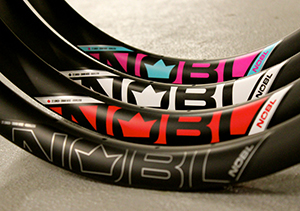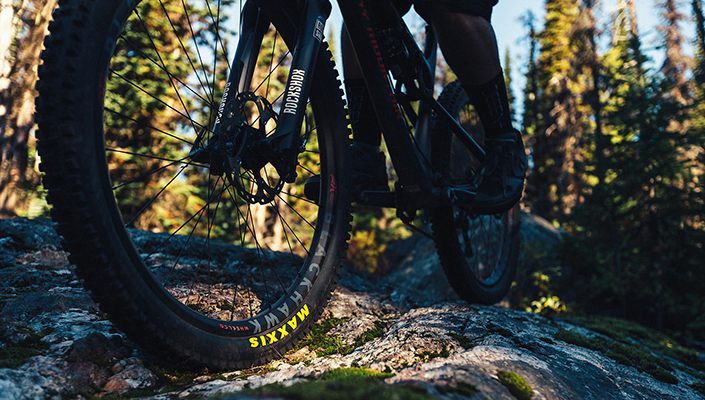You don't have to swipe, click, or flip too far into the catalog of your favorite bicycle company to see a significant amount of carbon fiber. Six on the periodic table, carbon is a commonly accepted material in the bike industry for increasing performance and reducing weight. Most MTB industry brands have been offering their premium level products constructed out of carbon for a number of years now, and some stragglers like Mavic are just beginning. With that being said, the introduction of carbon to the wheel market has been somewhat ground breaking. Having the ability to take away rotational weight while increasing lateral stiffness and durability is an upgrade many riders will appreciate at first ride, but is it worth the price? On your mountain bike?
Let's run through the construction, features, and pricing of carbon rims and then delve further into the ride.
Construction
When carbon wheels first started gaining traction a few years ago, I asked a lot of questions as to why the price was that much higher. After a phone call with the head office at Easton Cycling, I quickly found out that most carbon rims will take any given company around 7 hours to produce. It is a common misconception that building these carbon rims is a highly automated process. Instead, it takes a remarkable amount of time and personnel, many hours by hand to engineer the mold, layup each rim by hand, inject, drill, sand, coat, decal, and finish each and every rim. Factoring all of this, the price seems very fair for a reliable and performance enhancing upgrade. Easton has stated before that producing a carbon rim can cost 10 times that in producing an aluminum one.
Width
Rim widths vary, for good reason, and need to be considered when purchasing wheels; it has been a huge buzz topic in the mountain bike community. Riding a rim with a little wider ID (inner diameter) allows for more tire contact with the ground, resulting in better control while cornering as well as more contact with the ground for better braking.
Carbon wheels are being manufactured in many new rim widths, with brands like HED making a solid go at the carbon fat bike wheel market. Most other manufactures are making their products in rim various widths that allow the consumer the ability to choose what width most suits their needs, giving you ultimate control.
Pricing and Quality
There is no shortage of options in the carbon wheel game. Starting with a small group of big companies having the monopoly on the carbon rim selection, consumer demand has seen a surge of many other small companies following suit. Bigger brands like Bontrager with their Rhythm Pro TLR, and XXX TLR, and Specialized with their Roval Control wheels, have had some success, but there has been a significant amount of smaller companies taking a larger share of the market. Both mega component manufactures, Shimano and SRAM, have had carbon wheels on the market, but they've so far been lackluster compared to the smaller manufacturers.
Canadian brands such as Nobl Wheels, and Blackhawk Wheel Co. have made a substantial splash in their own markets, with similar brands like Derby and Zelvy gaining traction in the United States.
These brand offer unbuilt carbon rims, like Nobl's 29 x 36, from $370-$425 USD each. Complete built wheels will range depending on the quality of the hub and spokes, but you're usually looking at $1050 USD and beyond for the like's of Blackhawk's 27.5" Murder Carbon AM.
One thing to note is to watch the currency rates; exchange can make or break your budget depending on where the almighty American dollar may rest at the end of each day on both the retailer and the consumer direct sales for these small companies. With durability on par or better than alloy, it is making it harder to not buy carbon wheels.
Quality has been a huge concern between the little guys and the large companies in the past, but with more and more improvements in technology and upgrades in manufacturers' quality control, we are seeing the quality gap shrinking. Brands like Enve, with their M series wheels, have almost held a monopoly on the carbon mountain bike wheel market. Enve has had their rims become almost a status symbol, capturing the elite market with products selling for over $1000 USD per rim. Smaller companies are closing in on quality and bringing prices lower simultaneously.
Pre or Custom Built?
Custom building wheels can be fun as you get to choose all the parts that are going into your next project. If you have the knowledge, time, and tools to get this done, it can be rewarding riding a set of wheels you've built yourself. If you do not have a great deal of experience building wheels, I don't suggest to try with your first carbon rims. Pre-built wheels are a whole lot easier as you can slip them onto your bike almost straight out of the box and spend more time on the trails. Or you can compromise and pay your local shop to lace your new carbon rims up with the parts of your choice.
How do they ride?
The first, and easiest, benefit of carbon wheels is the acceleration. With a substantially stiffer ride than aluminum, you get energy transfer that has been claimed up to yield 20% more efficiency output when you put the pedal down. Heavy and more aggressive riders will feel a greater benefit when entering corners with speed; there is a very snappy feel to carbon wheels when exiting said corners. This is especially exaggerated with larger wheel diameters. I have had the luxury of riding carbon 29er rims for the last year and a half and they have completely changed my outlook on what wheels are capable of. The transfer of power on the climbs, paired with the stiffness for the downs, give me the confidence to charge into almost any trail around aboard the so called 29" 'wagon wheels'. The ride will feel more rigid, considerably faster, and more connected - like you're stuck on a rail.
RELATED: 6 Best Mountain Bike Tires for 2016
While carbon will dilute some of the vibration of the high speed trails, the rim will not contort to the terrain, having a more rigid and abrupt feel through technical descents. Due to the lack of flex, carbon wheels make your tires work harder then you may be used to; all the flex will be felt in the sidewalls and side knobs of your tires, which coincidently makes a very satisfying sound. Some experts will go as far as suggesting that you make adjustments to your suspension to soften the bike up to make up that difference.
Carbon also climbs really well. The increased stiffness allows you to carry your forward momentum easier with less affect from the rough ground below you. If you like to carry speed into your climbs, then carbon will give you a big advantage over riding aluminum.
I like to think of the comparison as between two vehicles: if carbon rims are the equivalent ride of a Subaru WRX Impreza, aluminum rims are that of a 1970 Cadillac Coupe de Ville. They are both very comfortable to cruise around and will give you a reliable ride, but when you want to hit a corner with speed and accelerate around the other side, there will be a noticeable difference in performance.
Recommendations
Carbon wheels will no doubt enhance the performance of any mountain bike with zippy acceleration out of the gate, stiff and snappy response out of hard corners, and fast along the singletrack. Take the time to decide what kind of rider you are and if you prefer the more comfortable and loose ride of aluminum over the stiffer, and at times rigid feel of carbon. After personally riding carbon wheels for the last 2 seasons, I feel it has both improved my riding and inspired confidence heading into corners with speed. I have been extremely happy with upgrading to carbon for my style of riding and terrain. I recommend seeking out a demo set to test ride on your own bike, this way you can fee the differences in experience and be sure before committing to the purchase. And once you do commit, you'll be satisfied knowing it is increasingly easier to find carbon rims for nearly the price of alloy.
![]() Check out the Comparison
Check out the Comparison
Compare 4 of the best carbon wheels from Blackhawk, Zelvy, Bontrager, and Enve

RELATED ARTICLE:
Best XC Full Suspension Bikes for $1500-$3000
Looking for a new entry to mid level full suspension bike?BikeRoar has you covered with 6 of the best bikes for... READ MORE
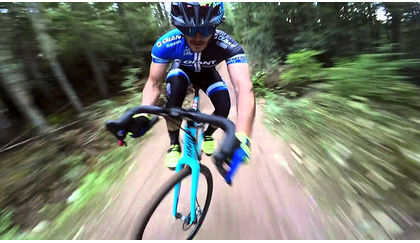
RELATED ARTICLE:
AM, XC, PLUS - What am I? A beginner's guide to who you are and what MTB to buy
Looking for some new product for your bike but unsure exactly what kind you ride?BikeRoar helps you understand who you rare and what... READ MORE
